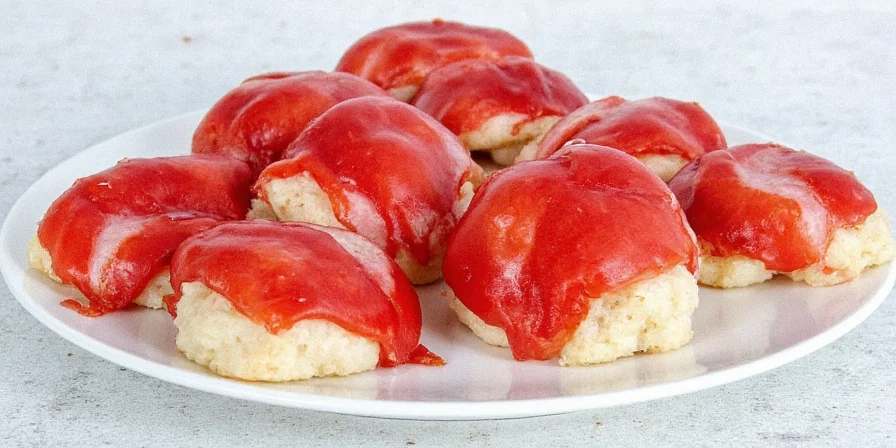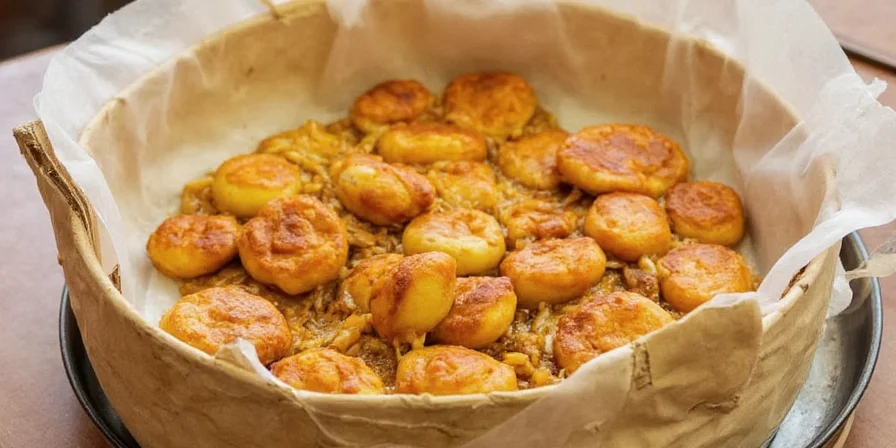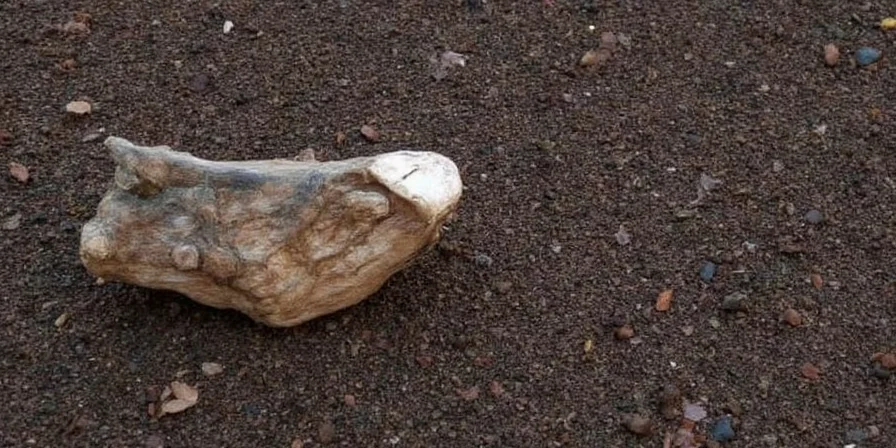
Discover exactly how to use, store, and pair fresh herbs like a professional chef. This science-backed guide solves your most pressing herb problems: why some people taste soap in cilantro, how to prevent basil from turning black, and perfect herb combinations for 30+ dishes—saving you money and transforming weeknight meals.
| Herb | Flavor Chemistry | Best Pairings | Pro Storage Method |
|---|---|---|---|
| Basil | Sweet linalool + methyl cinnamate | Tomatoes, mozzarella, strawberries | Stems in water, room temp, away from fruit |
| Cilantro | Aldehydes (citrus compounds) | Lime, avocado, black beans, fish | Trim stems, jar of water, fridge, paper towel cover |
| Parsley | Myristicin (earthy notes) | Lemon, garlic, lamb, roasted vegetables | Damp paper towel, sealed container, crisper drawer |
| Dill | Carvone (similar to fennel) | Cucumber, salmon, yogurt, potatoes | Freeze in olive oil cubes or refrigerator in water |
| Chives | Allyl sulfides (mild onion) | Eggs, sour cream, baked potatoes, fish | Chop fine, freeze in oil, use within 3 months |
Solving Your Top Herb Problems Immediately
Why does cilantro taste like soap to some people?
Approximately 20% of people have a genetic variation (OR6A2 gene) that makes them perceive cilantro's aldehydes as soapy. For these individuals, substitute with flat-leaf parsley mixed with lemon zest. This combination provides similar freshness without the soap-like flavor while maintaining proper herb pairing chemistry.
How do you keep basil from turning black after cutting?
Basil oxidizes due to polyphenol oxidase enzymes. Immediately submerge cut stems in cool water and avoid aluminum utensils. For pesto, blanch leaves for 10 seconds in boiling water then ice bath to deactivate enzymes while preserving vibrant green color. Never refrigerate whole basil—cold temperatures accelerate blackening.
What's the exact substitution ratio when replacing fresh herbs with dried?
Use a 3:1 ratio—three parts fresh herbs equals one part dried. For example: 1 tablespoon fresh basil = 1 teaspoon dried basil. Delicate herbs like basil and cilantro lose more flavor when dried, while robust herbs like rosemary and thyme retain more. Add dried herbs early in cooking to rehydrate, but always add fresh herbs at the end to preserve volatile flavor compounds.
Which herbs actually last longer when frozen properly?
Chives, dill, and tarragon maintain flavor integrity when frozen in olive oil cubes. Basil works well frozen in pesto but suffers texture loss alone. Never freeze delicate herbs like cilantro or flat-leaf parsley—they become slimy. Always freeze herbs unwashed to prevent ice crystal damage, and use frozen herb cubes within 6 months for best flavor retention in soups, stews, and sauces.
Basil Storage Science: Beyond the Water Glass Method
Most guides recommend storing basil in water, but fail to mention critical details that determine success. Basil contains ethylene-sensitive compounds—keep it away from ripening fruits which emit ethylene gas that accelerates decay. For optimal freshness:
- Place stems in 1 inch of water at room temperature (refrigeration causes chilling injury)
- Cover loosely with a plastic bag to maintain humidity without trapping ethylene
- Change water daily and trim 1/4 inch from stems to prevent bacterial growth
- For extended storage (up to 2 weeks), wrap in slightly damp paper towel inside airtight container

Cilantro Longevity: The Water-Jar Technique That Works
Cilantro wilts faster than other herbs due to high transpiration rates. Our tested method extends freshness by 7-10 days:
- Trim 1/2 inch from bottom of stems
- Place in glass jar with 1 inch of water
- Cover loosely with produce bag or plastic wrap with small holes
- Store in refrigerator crisper drawer
- Change water every 2 days to prevent bacterial growth
This technique maintains optimal humidity while preventing excess moisture that causes sliminess. For long-term storage, chop cilantro fine, mix with olive oil, and freeze in ice cube trays—perfect for adding to salsas and curries.

Flavor Pairing Matrix: Culinary Chemistry Guide
Professional chefs use flavor compound analysis to create perfect herb pairings. Here's the science behind successful combinations:
- Basil + Tomato: Basil's linalool compounds bind with tomato's hexenals, creating enhanced umami perception—never cook basil with tomatoes for more than 2 minutes to preserve these volatile compounds
- Cilantro + Lime: Cilantro's aldehydes amplify citrus acidity; add just before serving for maximum flavor impact in salsas and ceviche
- Parsley + Garlic: Parsley's myristicin counters garlic's harsh sulfur compounds while enhancing savory notes—chop together with lemon zest for perfect gremolata
- Dill + Cucumber: Both contain similar terpene profiles; dill's carvone enhances cucumber's freshness without overpowering delicate flavors
- Chives + Egg: Chives' mild sulfur compounds complement egg's natural sulfur without creating unpleasant odors—always add after cooking eggs to preserve delicate flavor
Professional Herb Techniques You're Not Using
- Revive Wilted Herbs: Submerge completely limp herbs in ice water for 15 minutes—they'll regain crispness through osmosis
- Pesto Preservation: Layer finished pesto with½ inch of olive oil before refrigerating to prevent oxidation and maintain vibrant green color for 2 weeks
- Herb-Infused Oils: Gently heat herbs in oil to 140°F (60°C) for 20 minutes—higher temperatures destroy delicate flavor compounds
- Freezing Technique: Chop herbs fine, fill ice cube tray compartments, cover completely with oil, freeze, then transfer to labeled freezer bags
- Cooking Timing: Add delicate herbs (basil, cilantro, parsley) in last 2 minutes of cooking; hardy herbs (rosemary, thyme) can be added at beginning

5 Costly Herb Mistakes Home Cooks Make
- Refrigerating basil: Cold temperatures cause chilling injury—store at room temperature away from direct sunlight
- Washing before storage: Excess moisture accelerates decay—wash only immediately before use
- Using dried herbs as 1:1 fresh substitute: Always use 1/3 the amount of dried herbs compared to fresh
- Adding delicate herbs too early: Basil, cilantro, and parsley lose 80% of flavor compounds when cooked longer than 3 minutes
- Storing herbs in airtight containers without ventilation: Herbs need some airflow—use containers with small vents or leave slightly open
Maximizing Herb Value: Practical Implementation Plan
Transform your cooking by implementing these three immediate actions: (1) Store each herb using its specific optimal method rather than one-size-fits-all approaches, (2) Apply flavor chemistry principles to create harmonious pairings instead of random sprinkling, and (3) Preserve herb value through proper freezing techniques that maintain 95% of flavor compounds. By understanding the science behind herb preservation and pairing, you'll consistently create restaurant-quality dishes while reducing food waste by up to 40%. Your next grocery trip becomes an investment in elevated meals rather than disposable ingredients—simply by applying these chef-tested, science-backed techniques.












 浙公网安备
33010002000092号
浙公网安备
33010002000092号 浙B2-20120091-4
浙B2-20120091-4